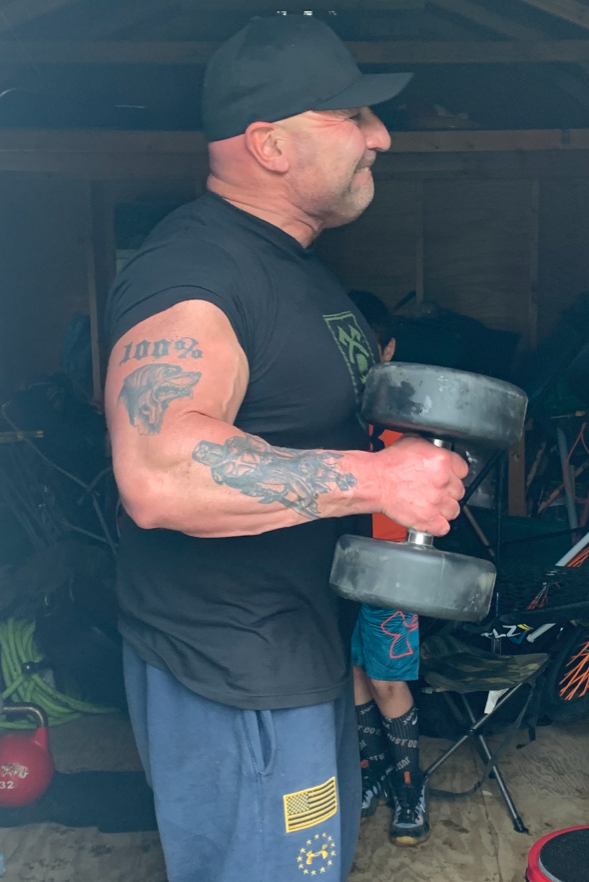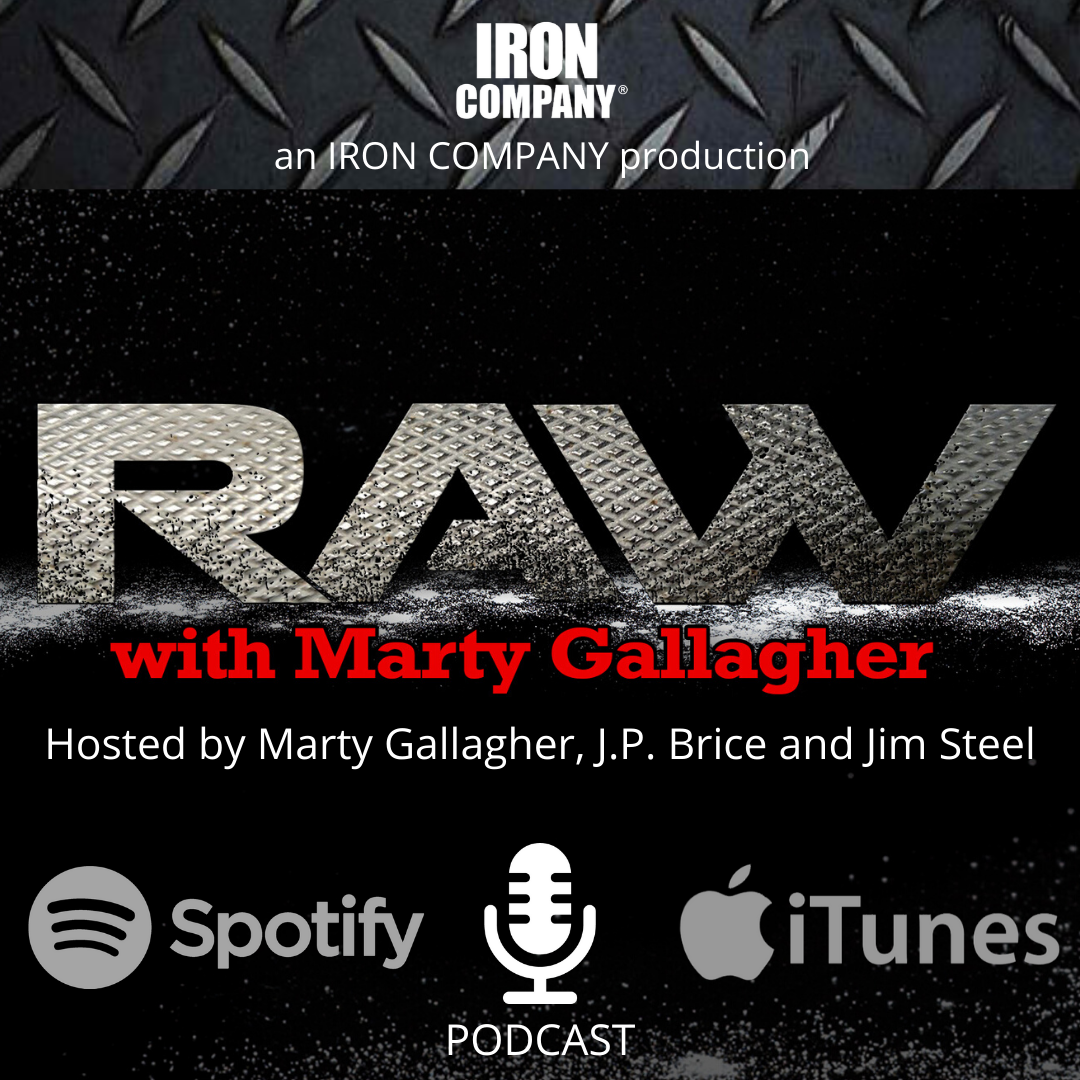
Keeping Training Technique Fresh For Continued Progress
I received an email the other day from a listener on the RAW podcast, asking for some detail on how I changed up my training technique. I had mentioned briefly on air that I used different workouts at times, or permutations of existing training technique protocols that I use, to add variety to my training. In this article I will explain in more detail how I go about these changes in training sessions.
When I am performing bodybuilding type workouts, which is most of the time now, I usually perform five sets of twelve reps (5x12) of each exercise and ten to fifteen sets a body part on the average. I usually do one warmup set per exercise and then each set of twelve is performed to positive failure, meaning that when I can't perform a rep in good form the set is concluded.
Within those workouts, I will add some negatives (slow eccentrics), peak contraction (flexing hard at the top of exercises such as curl) and partial reps at times (“burns”). These are all ways to intensify the training, making the sets harder without necessarily adding weight.
And sometimes, I will change it all up.
I will go six weeks or so with the 5x12 and then I will redesign the workout to add variety. I feel and see that my body responds favorably both in strength and muscular gains whenever I switch out the program. Over time, I have also found that with the variety, I look forward to going to the gym more and my workouts take on new meaning.
One way that I change the workouts is to look at it as a Total Rep Scheme. Here is how it works: My total reps per exercise are usually sixty (5x12), so let’s say that I choose dumbbell benches as my exercise. I select a weight which I know will get me to around twenty reps before failure. After twenty reps, I will set the weight down, count slowly to ten, then pick up the same weight again and do as many reps as I can. I usually get around twelve reps. Now, I am up to thirty-two reps, twenty-eight reps to go to get to sixty. Again, I will set the weight down, count to ten and then pick up the dumbbells and do as many as I can. I may get eight to twelve reps. And I keep doing that; doing as many reps as I can, taking a short rest and going again until I get to the magical number of sixty repetitions.
When performing the sets, I also change the rep speed. Let's say that I’m doing that first set of twenty. I may do each rep with a fast concentric(raising) phase and fast eccentric(lowering) phase. Or I may do the first ten reps of that set slow and controlled and then finish the last ten reps fast up and down. You will need to figure out the correct weight to use so that you will get around twenty reps on that first set. If you can do more than that, the weight is too light and if the weight is so heavy that you can only get three to six reps on the first set, , it will take you forever to get to sixty. I have also used the same training technique with a total rep number of one hundred and twenty that I needed to reach. In that case, if I get less than eight reps on any set, I will drop the weight slightly (e.g., eight five pounds down to seventy-five pounds), so that I can get at least eight to twelve repetitions a set as I move on. You can really use this formula with any rep scheme, it is your choice. Have fun with it and experiment. You decide the number of reps and after a few workouts, you will get a better idea of what weights to choose. It's easiest to use machines for this training technique, although barbells can be used. My only warning would be that if you are trying it with squats or deadlifts, be smart about stopping your set before your back rounds or technique falters. Take rest between exercises so that you can really push hard and to make sure that you are failing through muscular exhaustion, not cardiovascular exhaustion.
Another training technique that I used occasionally is Failure and Three Drops. Here's how it is done: I first pick an exercise, let's say a dumbbell one arm row. I will do a light set of twelve reps, then a medium heavy set for eight reps. Those are my warmups. Then I will pick a weight that at around six reps, I will be unable to complete the set-in good form. Let's say that I picked a one-hundred-and-twenty-pound dumbbell for the first set. After that set, I will immediately go down in weight, for example going from the one hundred twenties down to the one hundred. If I make too small of a drop in weight, my form suffers right away. Since I am going to fail on the set with the one hundred and twenty pounder, I'm pretty spent and with no rest at all, the drop needs to be significant. With the one-hundred-pound dumbbell, I will do as many as I can, again with perfect form and to failure and then put the weight down and drop down in weight even further, probably down to the eighty-five-pound dumbbells or so . I take that to failure and then do one more drop in weight and go to failure then also. And then I will move on to the next exercise. Be careful with leg exercises using this training technique. Machine leg work is best here, something like leg extensions, leg curls and hack squats. You can do it with barbell squats but be very smart: When you lose form, stop the set. In addition, if you are performing these sets with a bench press or a shoulder press or a similar barbell exercise, my advice is to use small plates on the bar. For example, Let’s say that you start off with two hundred and twenty-five pounds on the bar. Try putting a forty-five, a ten and three, five-pound plates on each side of the bar. That way, when you go to change the weight on the bar, it's more convenient and more importantly, your rest is short. If you are working by yourself, you have to hustle to change the plates. If you feel like it’s too long of a rest, you may want to switch to a selectorized machine. Also, after that first exercise, I most likely will only perform one warm up set before my next movements top set, but warm up as much as you need. Just don't do so many sets that you won't have the energy for the all-out set
This is a fun way to perform sets, especially if you haven't done it before. You will be sore as hell the first time that you do it. I also like it because you can use heavy weight for the last set, and you can get really fired up for it. After all, it's just one set, right? Get really crazy for the set! You may be done with the whole session in twenty minutes, but the sneaky intensity multiplier is that there are sets within that set. I'll usually perform three exercises per body part in this fashion, and feel free to take as much rest as you need between exercises but remain focused between them.
If you put maximum intensity into your sets, you may feel shaky and nauseous when performing this technique. Push through it! The results are worth the suffering!
So, there you go, two different ways to change up your training technique to maximize intensity and add variety. Both techniques are severe in muscle breakdown and intensity. Be smart and train hard and let us know your results!
About The Author
Jim Steel has been immersed in athletics and the Iron Game for most of his life. He has been a college football player and coach, powerlifter, Muay Thai fighter and is currently a competitive bodybuilder. In 1999, Steel was named Assistant Strength and Conditioning Coordinator at the University of Pennsylvania, and moved up to Head Strength and Conditioning Coordinator in 2004. He is the owner of the blog basbarbell.com, and is a motivational speaker, frequent podcast guest and the author of two books, Basbarbell Book of Programs and Steel Reflections. Steel is a Certified Strength and Conditioning Specialist with the National Strength and Conditioning Association.


